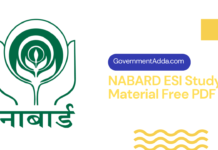Precision farming is a farming management concept based on observing, measuring and responding to inter and intra-field variability in crops. Crop variability typically has both a spatial and temporal component which makes statistical/computational treatments quite involved.
⇒ Precision agriculture is changing the way farmers and agribusinesses view the land from which they reap their profits.
⇒ Precision agriculture is about collecting timely geospatial information on soil-plant-animal requirements and prescribing and applying site-specific treatments to increase agricultural production and protect the environment.
⇒ Where farmers may have once treated their fields uniformly, they are now seeing benefits from micromanaging their fields. Precision agriculture is gaining in popularity largely due to the introduction of high technology tools into the agricultural community that are more accurate, cost effective, and user friendly.
⇒ Many of the new innovations rely on the integration of on-board computers, data collection sensors, and GPS time and position reference systems.
This technique is strictly based on the Global Positioning System (GPS), which was initially developed by U.S. defence scientists for the exclusive use of the U.S. Defence Department.
How it is done?
A filed is divided into management zones called grids on the basis of soil pH, nutritional status, pest infestation, yield rates, and other factors that may affect crop production. The management decisions are based on the requirements of each zone. The tools such as GIS, GPS, etc. are used to control zone inputs. With the use of GPS, exact location for a particular management decision can be found. For example a farmer mounts a GPS device on the tractor while applying the fertilizers or pesticides. Crop yield can also be monitored to create maps that show the high and low production areas of a field for improved management decisions.
Technologies used in Precision Agriculture
Mapping & Data Collection
- Maps generation is the first step in Precision Farming. The maps measure spatial variability and provide the basis for controlling spatial variability.
- Mapping is done with data collection in the filed related to various spatial variables such as soil type, soil nutrition status, crop density, infestations etc.
- The data is collected using soil probes and other such tools. Mapping and data collection can be done using the RS, GIS and manual inputs.
Global Positioning System (GPS) receivers
- The GPS satellites broadcast the signals that allow the GPS receivers to compute their location. The information is provided while in motion.
- Having precise location information at any time allows soil and crop measurements to be mapped.
Yield monitoring
- The grain yield monitors measure and record the yield of the crop, which is essential for making sound management decisions.
- If the yield maps are used properly, they would provide important feedback in determining the inputs such as fertilizer amendments, seed, pesticides and cultural practices including tillage and irrigation.
Remote sensing
- Remote sensing refers to collection of data from a distance. The data sensors can simply be hand-held devices, mounted on aircraft or satellite-based. The remote sensing provides information about the crop health, moisture, nutrients, compaction, crop diseases etc.
- For example, the near infrared images that are highly correlated with healthy plant tissue can be recorded in the cameras.
- RS also provides information about the in-season variability that affects crop yield and extent of crop stress.
Geographic information systems (GIS)
- Geographic information systems (GIS) use feature attributes and location data to produce maps.
| NABARD Grade A Assistant Manager 2018 Important Links | ||
| 1. | NABARD Assistant Manager Grade A 2018 Recruitment Notification Apply Online | Click Here |
| 2. | NABARD Grade A Officers Exam Syllabus 2018 – Prelims/Mains | Click Here |
| 3. | NABARD Grade A Officers Exam Pattern 2018 – Prelims/Mains | Click Here |
| 4. | NABARD Grade A Assistant Manager Previous Year Question Papers PDF – Download Here | Click Here |
| 5. | NABARD Grade A Previous Year Cut Off Marks | 2017, 2016, 2015 Cut Off Marks | Click Here |
| 6. | NABARD Grade A Assistant Manager Study Material | Books | ESI | ARD | English | GK Pdfs | Click Here |
| 7. | NABARD Grade A Assistant Manager ARD Agriculture and Rural Development PDF | Notes | Books | Click Here |
| 8.
9. 10. |
NABARD Grade A Assistant Manager Study Plan | How To Prepare For NABARD Grade A Officer Exam
NABARD ARD Study Plan & Preparation Tips and Tricks for Agriculture and Rural Development (ARD) NABARD ESI Study Plan & Preparation Tips and Tricks for Economic & Social Issues(ESI) |
Click Here |













